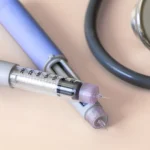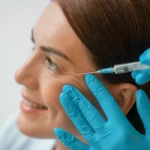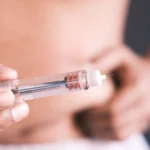
Effective medical device inventory management is crucial for healthcare facilities to ensure the availability, safety, and proper functioning of medical equipment. In this guide, we’ll cover the basics of medical device inventory management, as well as best practices, technologies, and strategies you need to keep your office highly functional and your patients safe.
Key Takeaways
- Proper inventory management improves healthcare facility resilience, operational efficacy, patient safety, and resource management.
- Reliable suppliers such as Medica Depot are a cornerstone of successful medical device inventory management.
- Dermatology offices benefit from medical device inventory management software, as it can automate purchase orders, help track devices, and improve compliance.
- The three main management techniques are the Just-In-Time Inventory, the Pull Technique, and ABC Analysis.
What is considered a medical device?
A medical device is any instrument, apparatus, implant, machine, software, or material used for medical purposes, from diagnostics to prevention and treatment of medical issues. Crucial medical devices in dermatology offices include:
- Medical supplies such as gloves, face masks, and cotton balls
- Equipment such as laser therapy and dermatoscopes
- Injectables such as dermal fillers
- Pharmaceuticals such as anesthetics
- Administrative supplies
- Organizational supplies
- Software, including medical device inventory management software
Implants such as dermal fillers and instruments like needles and cannulas are also considered medical devices, and they are not only used in aesthetic medicine but also in treating other facial and oro-facial conditions.
Considering This Product?
Explore Options With Our Sales Team. SCHEDULE A MEETING
What is inventory management in healthcare?
Medical device inventory management is a process of overseeing and controlling medical devices throughout their lifecycle. In dermatology offices, it is recommended to keep at least a two-week supply of inventory.
Maintaining optimal medical device levels means organization in every phase of the lifecycle:
- Procurement – The most important part of inventory management is finding a reliable supplier. This ensures medical device safety for your staff and patients and the proper operation of your business. Choose vendors and suppliers who comply with relevant regulations and standards.
- Purchase orders – The next part is creating and managing purchase orders to ensure the timely and accurate ordering of supplies, especially basic supplies such as cannulas and needles.
- Storage – For example, dermal fillers often need to be stored in a refrigerator to maintain their efficacy. Build a system based on the manufacturer’s recommendations. Also, ensure safe storage to prevent unauthorized access to sensitive medical devices and substances.
- Labeling – Clearly label all storage areas and individual products to make it easy for staff to find and restock items.
- FIFO (First in, first out) – Use the FIFO method to ensure older stock is used before newer stock and reduce the risk of using expired products.
- Tracking and monitoring – Barcodes or RFID tags are excellent for easy scanning and tracking of inventory. This helps in maintaining accurate records of usage and stock levels.
- Stock control – Set minimum and maximum stock levels (par levels) for each item and use medical device inventory tracking software to automate reorder alerts.
- Audits and inspections – Perform regular audits to verify the state of your medical device inventory. Also, schedule inspections to remove any expired, damaged, or defective devices.
- Usage – Monitor how you use the devices to optimize your stock levels. See whether there are seasonal and other fluctuations.
- Waste management – Implement practices to minimize waste and manage costs, as well as deal with refuse according to regulations.
- Compliance and reporting – Your inventory management practices must comply with relevant regulations and standards (FDA, OSHA, ISO 14971, Controlled Substances Act, MM Standards, and others). Keep accurate records of inventory, including lot numbers, expiration dates, and usage logs.
The Three Main Techniques
The importance of inventory management in healthcare cannot be understated — it ensures the safety, quality, and availability of medical supplies and equipment. Proper management also improves operational efficiency, even in emergency situations such as natural disasters.
Here are the three main inventory management techniques that organizations use to reduce their costs and optimize their efficiency.
Just-In-Time Inventory (JIT)
The Just-In-Time (JIT) technique aims to improve efficiency and reduce waste by receiving goods only as they are needed, minimizing waste and inventory-holding costs. This creates a lean inventory, aiming at as little or no excess inventory.
For example, it can be used for surgical instruments and supplies. With the JIT method, you would order based on scheduled procedures to ensure they arrive just in time for use. To successfully use the JIT technique, you will need medical device inventory management software.
Pull Technique
The pull technique is a demand-driven medical device inventory management approach where inventory replenishment is based on actual customer demand rather than forecasts. This method helps minimize excess inventory and reduces the risk of stockouts. The pull technique focuses on actual consumption and customer orders.
For example, medical devices such as syringes, needles and cannulas, gauze, and gloves are ordered based on daily or weekly consumption rates. Devices such as dermal fillers and cosmetics are ordered based on patient or client orders to avoid overstocking.
ABC Analysis
The ABC technique is popular as it categorizes and organizes your medical device inventory list into three groups:
- Category A – These are high-value items with low frequency of use. They require strict control and accurate records (e.g., expensive medical equipment and specialty drugs).
- Category B – Moderate-value items with moderate frequency of use. These items need regular monitoring (e.g., standard medical devices, common medications, and skincare products).
- Category C – Low-value items with high frequency of use. These items require less control and simpler management (e.g., basic consumables like bandages, cotton balls).
This technique has several key benefits: it helps you prioritize critical items, prevents overstocking on less important items, and with time, gives you clear insights into which items are the most critical for your practice.
FAQ
How do you manage medical supplies inventory?
Managing your medical supplies inventory covers the entire lifecycle of the product. In dermatology offices, this includes:
- finding a reputable supplier
- creating orders (which you can automate using medical device management software)
- organizing and labeling items
- storing them securely according to manufacturers’ recommendations
- conducting inventory audits and inspections to maintain accuracy and compliance with regulation
- managing waste, and finally
- reporting and keeping records
What are the 3 major inventory management techniques?
The three major inventory management strategies are the pull technique, ABC analysis, and the JIT (Just-in-Time) technique. They are effective inventory management methods that can significantly enhance efficiency, reduce costs, and improve service levels in healthcare and other industries
What is medical device inventory?
Medical device inventory tracks medical device stock levels in a healthcare setting, typically using specialized software. Managing medical devices and supplies efficiently reduces costs, increases safety, improves preparedness for emergencies and natural disasters, and helps create disposal and waste management policies.
According to the WHO, keeping and managing inventory can increase the resilience of healthcare facilities, improve staff organization, and identify training needs.
What is the best practice for healthcare inventory management?
The best practice for managing your medical supplies inventory is investing in real-time tracking and automated reordering features, as it saves you time and prevents medical device loss from expiration and damage.
Another key element is having a reliable medical supplier, as well as a backup supplier to ensure you never experience a halt in your supply chain. Find out why we are the best medical supplier on the Web and how we can help you manage your inventory by contacting our sales team today.
References
- Nutovits J, Ba P, Harris. Equipment and Inventory Management in Dermatology. Accessed June 24, 2024. https://g-casa.com/conferences/bangkok24/paper_pdf/Harris%20Nutovits.pdf
- CQ. The Essential Guide to Medical Device Inventory Management. ComplianceQuest: AI-powered PLM, QMS, EHS & SRM Platform. Published August 31, 2023. https://www.compliancequest.com/bloglet/medical-device-inventory-management/
- Introduction to medical equipment inventory management. www.who.int. https://www.who.int/publications/i/item/9789241501392
Clinical aesthetics products refer to a category of products used in the field of medical aesthetics or cosmetic dermatology. These products are typically designed and formulated to be used under the supervision of healthcare professionals, such as dermatologists, plastic surgeons, or trained aestheticians. They are distinct from over-the-counter cosmetics in that they often contain active ingredients or formulations that require expertise in their application or administration.
Examples of clinical aesthetics products include:
-
Dermal Fillers: Injectable substances used to add volume, smooth wrinkles, and enhance facial contours. Examples include hyaluronic acid fillers like Juvederm and Restylane.
-
Botulinum Toxin (Botox): Injectables that temporarily paralyze facial muscles to reduce the appearance of wrinkles caused by repetitive movements, such as frown lines and crow's feet.
-
Chemical Peels: Solutions applied to the skin to exfoliate and improve its texture. They can treat acne, pigmentation issues, and signs of aging.
-
Laser and Light Therapies: Devices that emit focused light or laser energy to treat various skin conditions, including acne, scars, and signs of aging.
-
Prescription Skincare Products: Formulations containing active ingredients like retinoids (vitamin A derivatives), hydroquinone, or prescription-strength antioxidants to address specific skin concerns under medical supervision.






